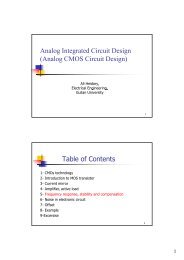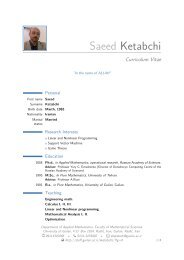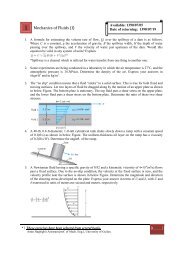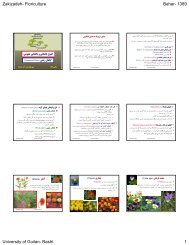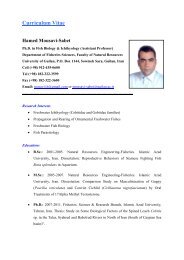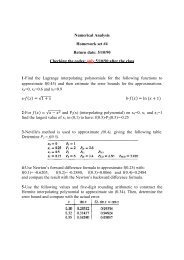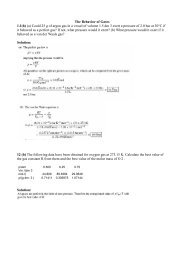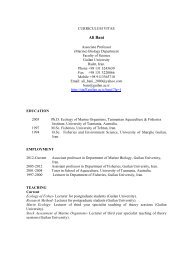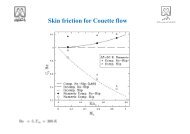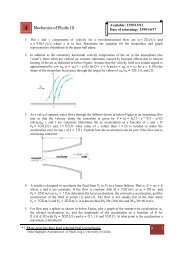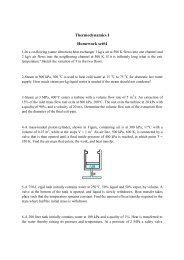Medical Tourism in Developing Countries
Medical Tourism in Developing Countries
Medical Tourism in Developing Countries
- No tags were found...
Create successful ePaper yourself
Turn your PDF publications into a flip-book with our unique Google optimized e-Paper software.
98 ● <strong>Medical</strong> <strong>Tourism</strong> <strong>in</strong> Develop<strong>in</strong>g <strong>Countries</strong>Product differentiation succeeds <strong>in</strong> foster<strong>in</strong>g brand or place loyalty onlyamong a certa<strong>in</strong> type of patient and tourist. 6 The extent to which a dest<strong>in</strong>ationachieves monopoly status depends on real and perceived factors.Among the former are tangible sights or natural resources that cannot beduplicated. There is, for <strong>in</strong>stance, only one Eiffel Tower; there is only onehospital <strong>in</strong> Cuba where vitiligo is treated. The development of niches is aform of product competition, and depend<strong>in</strong>g on the size of the niche, itmay also result <strong>in</strong> price competition. In addition, tie-<strong>in</strong>s to hotels andvacation packages allow providers of medical tourism to price servicesacross a larger price range.Price competition among LDC medical providers <strong>in</strong> part expla<strong>in</strong>s whyoperations that cost $5,000 <strong>in</strong> Chile are available <strong>in</strong> Argent<strong>in</strong>a for $2,000. 7Price competition with<strong>in</strong> any given country also expla<strong>in</strong>s price differentials(<strong>in</strong> S<strong>in</strong>gapore, where health services are as expensive as <strong>in</strong> the West, theMount Alvernia Hospital began offer<strong>in</strong>g prices on par with those <strong>in</strong>Malaysia and India 8 ).Currency FluctuationsThe price of a service export reflects the value of the currency <strong>in</strong> which itis sold. Therefore, those countries whose currencies are weak on <strong>in</strong>ternationalmarkets have an advantage over those with strong currencies <strong>in</strong>sofaras the service supplied is more competitive. Asian countries cont<strong>in</strong>ue to behighly competitive because their currencies are still weak from the Asianf<strong>in</strong>ancial crisis (except for S<strong>in</strong>gapore, which has managed to withstand theworst of the crisis, and thus its currency rema<strong>in</strong>ed strong, and its medicaltourism prices are high). Favorable exchange rates result<strong>in</strong>g from the f<strong>in</strong>ancialcrisis were cited as one of the reasons Malaysia has been attract<strong>in</strong>ggrow<strong>in</strong>g number of foreign patients. 9 In Thailand, the crisis effect on medicaltourism was bolstered further by the fact that <strong>in</strong> the 1990s, Thailandbuilt private hospitals (its hospital capacity grew by 70 percent dur<strong>in</strong>g1990–97), so that by the time the Asian crisis hit, there was an overcapacity.10 As a result, the Thai government began promot<strong>in</strong>g medical tourismto attract foreign patients. Across the globe <strong>in</strong> Argent<strong>in</strong>a, authorities alsobegan promot<strong>in</strong>g medical tourism (among other <strong>in</strong>dustries) dur<strong>in</strong>g thedevaluation of the peso follow<strong>in</strong>g the economic crisis of 1999–2002. Thelow price of the currency <strong>in</strong> part expla<strong>in</strong>s the large price differential betweenstate-of-the-art medical services <strong>in</strong> Chile and Argent<strong>in</strong>a. 11 F<strong>in</strong>ally, the SouthAfrican rand has enjoyed a long-stand<strong>in</strong>g low exchange rate with majorcurrencies, mak<strong>in</strong>g medical tourism packages seem like barga<strong>in</strong>s. 12





